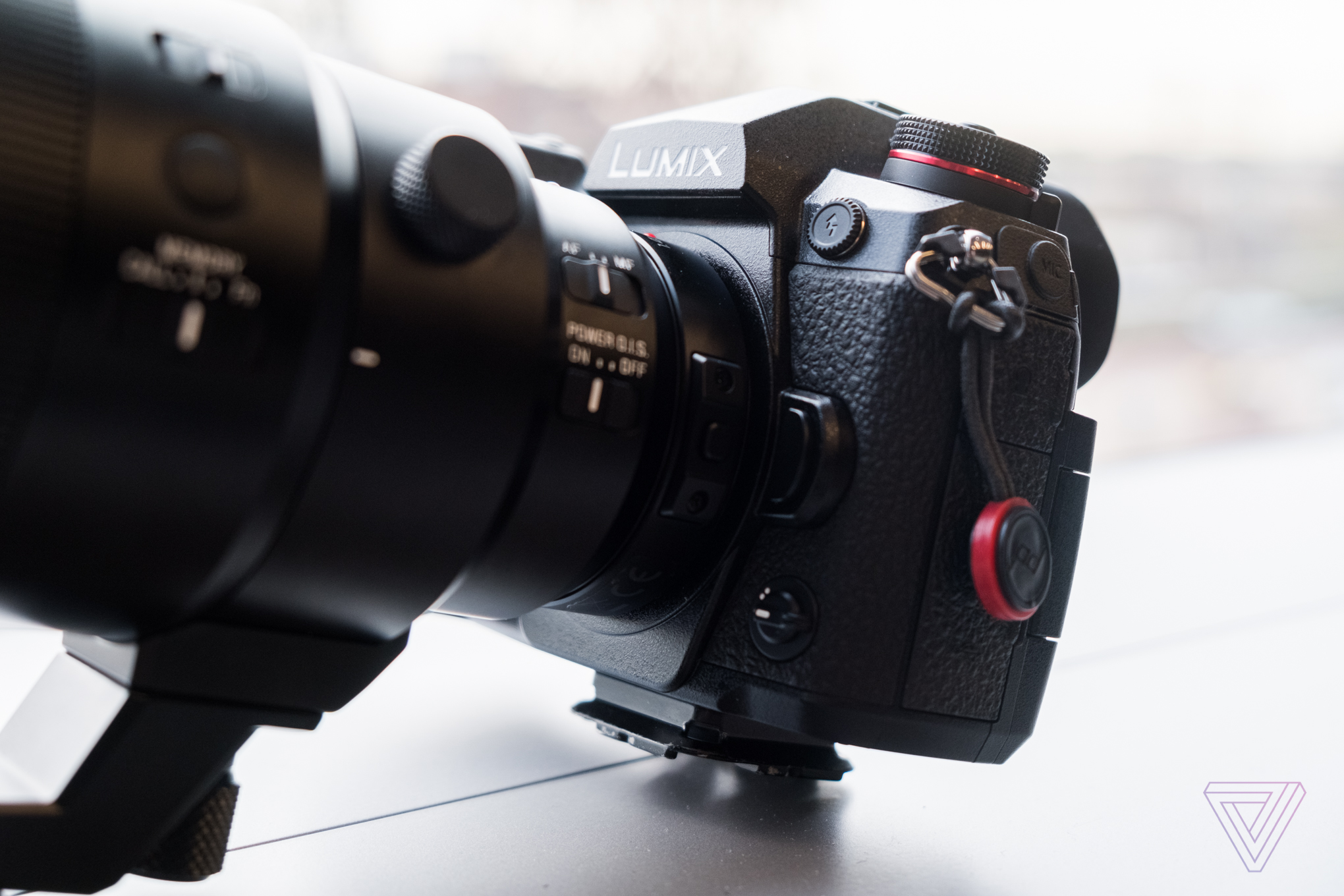/cdn.vox-cdn.com/uploads/chorus_image/image/57512843/panasonic_g9_7296.0.jpg)
The flagship camera of Panasonic’s Lumix lineup, the GH5, has been out for about a year now. Its relatively rave reviews almost always come with a caveat: it’s a bit one-dimensional. While the GH5 is a capable stills camera, it was built for video. So today, Panasonic is tilting the scales the other way with the Lumix G9.
The G9 — which costs $1,699 and goes on sale in January — is a stills-focused powerhouse of a digital camera built on mostly the same architecture as the GH5. It employs the same 20.3-megapixel Micro Four Thirds sensor, has 5-axis mechanical image stabilization just like the GH5, and Panasonic is using the same image processor — though it’s been tuned for much better stills performance than the GH5, Panasonic says.
The rest of the camera — from the new body shape, to the name itself — feels like Panasonic has torn a page out of Sony’s recent playbook. The G9 has a weather resistant magnesium alloy body with a deep grip that feels a lot like the one on the similarly-named Sony A9, or the A7. It’s also a stills-focused sibling of a video-first camera, mimicking the relationship between the A7R and the A7S.
There are similarities in the details, too, starting with the electronic viewfinder, which is the same robust 3.68 million dot resolution as the GH5 but has a higher magnification — 0.83x versus the GH5’s 0.76x — that makes it super easy to get lost in. I spent a few minutes with the camera at a briefing last week, and at first blush the viewfinder rivals those big, beautiful EVFs found on Sony’s best cameras. And like the one on the A9 (which is the same resolution but has a slightly smaller 0.78x magnification), the G9’s EVF has a refresh rate of 120 frames per second, which makes it extra pleasant to peer through.
If you glance at the spec sheet, the G9 also seems like it will be able to hang with Sony in certain intensive performance settings. In electronic shutter mode, the camera can shoot full resolution RAW or JPEG files at a blistering pace of 60 frames per second with single shot autofocus, or 20 frames per second with continuous autofocus. Panasonic is promising the G9 can achieve autofocus in just 0.04 seconds, too, which is again in the same class as Sony.
The G9 has much clearer limitations than the Sonys, though. The camera is only able to maintain those shooting speeds for a buffer of about 50 images — JPEG or RAW — meaning you won’t actually be able to touch the full 60fps. The A9 has a buffer of over 200 images, and the A7R III runs out of gas after around 76.
With the mechanical shutter, the G9 can hit 12 frames per second with single shot autofocus or 9fps with continuous AF. It will do that for 600 JPEGs, but only 60 RAW images. That’s plenty for most casual, and maybe even some pro shooters, but it again falls short of the capability of Sony’s cameras.
The other limitation is, as always, the size of the Micro Four Thirds sensor. Cameras with Micro Four Thirds sensors can take fantastic images, and Panasonic may very well have tuned the image processing on the G9 in such a way that the stills it captures look dramatically better than those on the GH5. But even if that winds up being the case, the fact remains that a Micro Four Thirds sensor is much smaller than the full frame sensors Sony uses, and so the G9 will never be able to match the resolution those cameras are able to capture. In that sense, it’s probably more directly comparable to something like the Olympus E-M1 Mark II.
If you can live with that, the G9 seems promising. It’s far cheaper than the A9 or even the A7 lineup, and yet it’s offering performance that is commendably in the same ballpark as those cameras. It hits all the basics, too; there’s a variable angle 3-inch touchscreen, plenty of knobs, buttons, and dials for manual control. (There’s even an AF joystick!) And even though it lacks the deep, professional video features of the GH5, it still shoots video at up to 4K resolution at 60 frames per second.
The GH5, like the GH4 before it, has become popular in its own right despite Panasonic’s dedication to a smaller sensor. So it’s not surprising that the company’s making the same bet with the G9. The surprise is that it doesn’t look like much of a gamble.


No comments:
Post a Comment